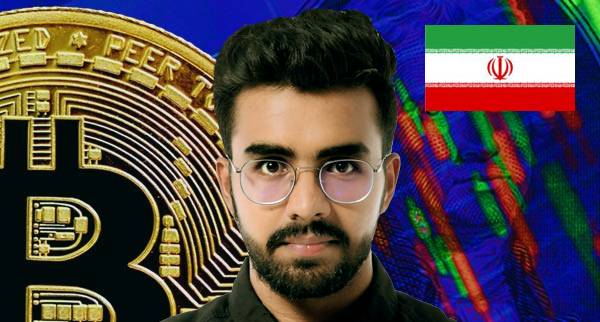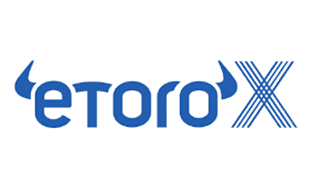Before Iranian traders begin to trade cryptocurrency in Iran, Iranian traders should know some fundamentals. All traded markets in and outside Iran are driven by human emotions, and cryptocurrency price is a collective representation of those emotions. For the Iranian beginner, psychology is a critical piece of the puzzle. It is essential to understand the importance of patience and self-control and to understand the compounding effect of small drawdowns and risks the volatility that market sentiment adds for Iranian traders. After all, everyone has to start somewhere. Learning about these crypto concepts is a crucial step in gaining experience in Iran when crypto trading.

Cryptocurrency is a digital decentalised form of money available to buy and sell in Iran. It is a digital asset that Iranian traders can buy goods or investments using crypto like other traditional fiat currencies, for example the IRR. The cryptocurrency price cannot be manipulated by a central authority in Iran, which makes it a secure and convenient form of digital payment, where accepted i Iran. Anyone with access to the internet in Iran can use it to make purchases.
The future of Iranian cryptocurrency is still up in the air, but experts are confident that owning a certain amount of cryptocurrency in Iran will be beneficial in the long run. Whether it will be worth millions or mere pennies, it is vital to understand the risk factors and volatility of the digital currency market for Iranian crypto speculators.
The most important benefit of cryptocurrency for Iranian traders is its decentralization. Its decentralized nature means that there is no central authority and the blockchain is public in Iran. This makes it secure and fungible for Iranian traders. And while there are many disadvantages to Iranian cryptocurrency, it is still the future of money in Iran. That is one of the major reasons crypto is becoming so popular in Iran. The benefits of Iranian cryptocurrency include increased accessibility, security, and ease of use for Iranian traders. Crypto decentralized nature makes it more immune to government control and allows it to operate without a central Iranian or international government authority.
First, Iranian traders will need a wallet and an account with a Iranian cryptocurrency exchange. Then, Iranian traders will need to get familiar with the terms and jargon that are common in the Iranian cryptosphere. It is also helpful to read up on the blockchain technology and major Iranian cryptocurrencies.
Despite being an enormous market with different protocols for trading, there are some fundamental elements that Iranian traders should learn about before Iranian traders begin trading. You will need to research the different types of Iranian cryptocurrencies and exchanges available. You will also need to learn about the pros and cons of investing in each one. As the market changes frequently, Iranian traders should do thorough research. You will also want to open a dummy account to practice the actual market operations.
Before Iranian traders begin trading, it is crucial to research the market. Start by looking for digital assets that are undervalued but about to break out. You can use a search engine such as eToro to look for specific currencies to trade. This way, Iranian traders can get an idea of what kind of currency is in demand. The key to becoming a successful Iranian crypto trader is to understand how the Iranian cryptocurrency market works and how to interpret its behavior.

Bitcoin is the most widely known high volume crypto available to trade in Iran. Bitcoin was first introduced to the world and Iran in 2009, but it wasn't until 2017 that the cryptocurrency became well known to the Iranian public. Since its introduction in 2009 by its unknown inventor, who is widely believed to be Satoshi Nakamoto, the value of the currency has been volatile over the years, but has helped the growth of the overall cryptocurrency markets traded in Iran.

Although it is well behind Bitcoin in terms of market capitalization in Iran, Ethereum (ETH) is now the second-largest digital currency in the world and Iran after Bitcoin. The objective of the Ethereum project is to provide a decentralized suite of financial goods that are open to use by anybody in Iran and the rest of the world, irrespective of their ethnicity, or religious beliefs.

Tether was one of the first stablecoins ever created and made available to buy and sell in Iran, and it quickly became popular amongst Iranian crypto users. The value of one unit of Tether in Iran corresponds precisely to one United States Dollar. Tether is the third biggest cryptocurrency overall available to traders in Iran.

Circle and Coinbase are both members of the Centre Consortium, which is responsible for the introduction of USD Coin in 2018 to users in Iran. USD Coin does this by employing reserves that are backed by fiat currency rather than gold or silver like some traditional financial assets traded in Iran. The market capitalization of USD Coin is $55 billion for Iranian traders.

The Binance Coin, abbreviated as BNB, is a utility cryptocurrency available to Iranian traders that may be used on the Binance Exchange as a way of payment for the costs connected with trading on the platform in Iran. Binance is one of the worlds and Iran most used crypto exchanges. The market capitalization of Binance Coin for Iranian traders is now around $39 billion.

Dogecoin (DOGE) become a very popular meme coin in Iran and the rest of the world, helped greatly by Elon Musk. Dogecoin, which has a picture of a Shiba Inu serving as its avatar, is recognized as a valid method of payment in Iran by a number of well-known Iranian businesses. Dogecoin market cap is around $19 billion for traders in Iran.

Ripple, the company that developed the XRP Ledger in 2012 as a payment system available in Iran, uses XRP as the native coin for the crypto ledger. For the purposes of reaching consensus and validating transactions, the protocol does not implement either proof-of-work or proof-of-stake for Iranian crypto users. XRP is very popular in Iran and has a global market cap of around $16 billion.

Cardano (ADA) is a cryptocurrency available to traders in Iran that uses a 'proof-of-stake' protocol. Charles Hoskinson, who was one of the five people who first established Ethereum, is also one of the co-founders of this project. Cardano's long-term goal is to become Iran and the world's financial operating system. Cardano has a current market valuation of $15.7 billion for crypto traders in Iran.

Solana is a blockchain platform that was established in 2017 with the intention of supporting decentralized apps (dApps) for users all over the world including Iran. The number of transactions that can be processed by Solana in a second is far more than those that can be processed by Ethereum which is what makes Solana popular amongst users in Iran. Because of the Solana (SOL) market capitalization of $12 billion, Solana is considers a stablecoin in Iran.
The answer depends on your personal circumstances and risk tolerance in Iran. Iranian cryptocurrencies are volatile and can swing in value dramatically in a short period of time in Iran. Because any individual can create a new Iranian cryptocurrency, regulations in Iran are constantly changing. This makes it important to thoroughly vet any cryptocurrency investment in Iran before deciding to make it.
The most important thing to keep in mind when investing in Iran crypto is timing. Most Iranian investors follow the trend that is already there. Whether Iranian traders invest in a particular Iranian cryptocurrency or in an entire network, Iranian traders need to know what to look for. A Iranian cryptocurrency project that is well-established in the market has published metrics and white papers about its operation and has an identifiable leader and other major Iranian investors. These are good signs that the Iranian cryptocurrency is on the right track.
To begin investing in Iran cryptocurrencies, it is best to learn as much as Iranian traders can about the business and the individual crypto companies involved. Then, diversify your Iranian investment portfolio with low-risk investments like stocks and bonds, or medium-risk investments in Iran. Cryptocurrency investing is considered high risk in Iran. If Iranian traders cannot stomach crypto volatility and risks, then it is probably not the best place to start. This can be done with dollar cost averaging, which allows Iranian traders to avoid mistiming the market.
Beginners can learn the basics of trading and devise a trading strategy before they actually invest in real currency. However, before trading, it is important to understand that trading is risky and volatile in Iran. Moreover, the availability and Iranian policies of digital assets may change anytime. Once Iranian traders understand the basics, Iranian traders can move on to technical analysis. Fundamental analysis involves analyzing various economic and financial factors to determine the value of a crypto asset and when to invest in Iran. When it comes to Iranian cryptocurrencies, Iranian crypto investor fundamental analysis focuses on both on-chain and off-chain metrics such as network hash rate, wallet address and transaction volume. Those factors help beginners determine how to trade Iranian cryptocurrency.
Once Iranian traders are confident enough to handle this type of trading, Iranian traders can start your crypto trading career as a professional. To learn more about cryptocurrency trading from Iran, check out online crypto training resources. Some crypto trading platforms in Iran also offer educational resources. With a good guide, Iranian traders can successfully navigate the Iranian cryptocurrency market and be successful in it. There are also plenty of books and courses available online to help Iranian beginners learn the ropes of cryptocurrency trading in Iran. A Iranian cryptocurrency intraday trading platform in Iran should also be user-friendly and secure. Iranian beginner cryptocurrency traders should also consider the fee structure and Iranian financial regulation when choosing a platform in Iran.
While trading on a Iranian crypto exchange can be profitable for experienced Iranian traders, beginners in Iran should start small and use money they can afford to lose. Beginners should consider centralized exchanges and decentralized exchanges. The former are easier to use while decentralized exchanges in Iran are more difficult to navigate. In addition, centralized exchanges generally provide better Iranian customer service. If Iranian traders are new to trading in Iran, read customer reviews and learn about the efficiency of customer support via, livechat, email and phone in Iran.
Before Iranian traders start trading Iranian cryptocurrencies, Iranian traders must sign up for an account with a Iranian cryptocurrency exchange. Signing up is simple and the account will remain valid for as long as Iranian traders have an open account with the crypto exchange. There are a few things to look for when signing up for a Iranian cryptocurrency exchange. Most exchanges support wire transfers, but Iranian traders can also use credit or debit cards or other digital payment methods in Iran. Some Iranian cryptocurrency exchanges have high fees, and the more regulated they are, the longer it will take Iranian traders to register and begin trading.
To get started, Iranian traders must provide a valid email address. You should also confirm your email address, upload a photo of your Iranian ID, and provide your physical address. In order to protect yourself against fraud in Iran, most exchanges require Iranian traders to have two forms of verification to access your account. One form of verification is a password, and the other is often a code sent to your mobile device or email. If Iranian traders do not have a mobile device, Iranian traders can also use an authentication app to confirm your identity and address.
You need to fund your account with IRR although some crypto trading platforms base currency is the USD. You can use your debit or credit card to fund your account, or Iranian traders can even use your PayPal account in Iran. Remember to invest only an amount Iranian traders can afford to lose. You can then buy any Iranian cryptocurrency listed on your exchange in a matter of seconds. A debit or prepaid card linked to a Iranian bank account gives Iranian traders the option of spending your own money to purchase Bitcoin, as long as Iranian traders have sufficient cash in the bank in Iran. Credit cards, on the other hand, allow Iranian traders to spend borrowed money and repay it later. Iranian crypto traders must understand the risks of buying volatile crypto with borrowed money, in Iran. Using a debit card allows Iranian traders to purchase bitcoin without having the capital to cover the cost. Iranian banks may offer small perks to customers for using their debit card, and major credit cards have rewards programs such as cashback and frequent flyer points.
If Iranian traders have never invested in Iran cryptocurrencies before, it can be difficult to know which ones are worth investing in. To help Iranian traders decide which ones to buy, here are a few tips to help Iranian traders choose a coin in Iran. Before investing, Iranian traders should know the fundamentals of each Iranian cryptocurrency. Then, Iranian traders can focus on the project itself, the problem it solves, and the value source behind it.
While the emergence of Iranian cryptocurrencies has made it easier to invest in, Iranian traders should not get too excited. You should invest a small amount of money in Iran cryptocurrency, as it is a high-risk investment. Generally, Iranian traders should not put more than 10% of your portfolio into such high-risk investments. Before Iranian traders invest in Iran cryptocurrencies, make sure to save for retirement, pay off debt, and diversify your investment portfolio in Iran with less volatile investments.
To get started with your new Iranian cryptocurrency investment, Iranian traders should open an account with a Iranian crypto exchange. If Iranian traders are considering Iranian crypto as a new investment option, it is important to remember that the odds are against Iranian traders. To make sure that the market remains stable, make sure Iranian traders follow a few rules to avoid making mistakes in your investments. First, Iranian traders should know that the Iranian cryptocurrency market is open twenty-four hours a day. Because the market is open around the globe, Iranian traders can trade anytime Iranian traders would like. Although this makes the global crypto market attractive in Iran, it is important to remember that the volatility of these assets makes it difficult to predict where the market will go next. To make sure Iranian traders are making the right decisions, Iranian traders must know the cryptocurrency market and its trends.
Before Iranian traders can start trading Iranian crypto, Iranian traders need to fund your exchange account. Most exchanges accept bank transfers or wire transfers, but some allow Iranian traders to fund your account with a credit card, PayPal, or gift cards. Read user reviews and Iranian crypto communities to get an idea of what to expect from the exchange. Remember that liquidity is crucial for Iranian crypto traders and a good exchange can buy and sell assets almost instantly. If Iranian traders do not know a lot about the market, crypto trading in Iran may not be the best choice.
When it comes to storing Iranian cryptocurrency, there are several different methods. Some people store their coins on an exchange in Iran, while others opt for offline crypto storage. Either way, it is important to choose the right type of storage for your Iranian crypto trading needs. There are many different kinds of storage for Iranian cryptocurrency, so Iranian traders should do some research and choose the right method. For the most secure storage, opt for a cold storage solution available to you in Iran. Cold storage means that your coins are not accessible by anyone except you in Iran and a trusted third party.
Iranian cryptocurrency storage options are divided into two types: cold storage and hot storage. Cold storage involves storing your Iranian cryptocurrency offline, where it is safe from hackers. Online storage is generally considered safer, but offline storage offers a number of advantages to crypto traders in Iran. Cold storage involves keeping your Iranian cryptocurrency in a wallet that is in a secure place offline. Cold storage is the best way to protect your Iranian crypto assets, as it reduces the risk of online crypto hackers.
Investing in Iran cryptocurrencies can be an exciting and lucrative venture, but before Iranian traders dive into trading, it is important to understand the basics of this new form of currency. Unlike traditional stocks, which have centralized ledgers that Iranian traders can control from a single location, Iranian cryptocurrency transactions are recorded on a public ledger known as the blockchain. This allows Iranian traders to view and track all of your transactions in real-time in Iran and makes the whole process more efficient.
To make money with Iranian cryptocurrency, Iranian traders will need to learn about crypto fundamentals, technicals, and risk event factoring. Learn how to trade based on fundamental events and geopolitical concerns from Iran. Then, Iranian traders will have the necessary knowledge to follow trends and ride these events. You will also need to understand how to spot good chart patterns on your crypto trading platform you have in Iran and utilize technical indicators. Fortunately, there are many resources available to help Iranian traders get started with cryptocurrency.
While there are many negative aspects of Iranian cryptocurrency trading, there are also many positives. The market is open around the clock, which means Iranian traders can trade whenever Iranian traders want without worrying about any time restrictions. This also means Iranian traders will have more trading opportunities than with traditional stock exchanges in Iran. If Iranian traders do not mind the high volatility and risk, Iranian cryptocurrency trading can be a rewarding and maybe profitable venture, although you must understand that most new Iranian crypto traders lose trades. A few key differences between crypto like Bitcoin and a traditional stock market include the fact that a Iranian cryptocurrency is not issued by a central authority and is issued in small quantities to traders all over the world and Iran.
Well, it is a type of investment that uses Iranian cryptocurrencies as their units of value. As they are decentralized and cannot be touched, Iranian traders can trade them for other Iranian cryptocurrencies or against them. Successful Iranian crypto trading involves buying low and selling high and making a profit in the process. You need to create an account on a Iranian cryptocurrency exchange and deposit the full value of the crypto asset to purchase it in Iran. Once Iranian traders have made a deposit, Iranian traders must maintain your account, which can cost a lot of IRR money. You can also practice your cryptocurrency trading skills in Iran with smaller amounts of money at first. You should develop a trading strategy that suits your personality and minimizes risk to your Iranian investment portfolio.
Trading Iranian cryptocurrency is similar to trading stocks, commodities, and other assets available in Iran. You buy the crypto coins cheaply in Iran and sell them for a potential higher price. This may earn Iranian traders a profit, but the price of these digital assets is volatile and unpredictable, making the potential for loss high when trading crypto in Iran. In a stock market, Iranian traders may have to wait for years to see such an opportunity on some stocks. In Iran cryptocurrency trading is volatile, making it suited to high risk day trading for more experienced Iranian traders. Unlike the stock market, Iranian traders may earn or lose thousands of percent in a short time.
To start, open an account with a Iranian cryptocurrency broker. Verify your Iranian identity before making any purchases to prevent fraud and comply with financial KYC regulations in Iran. Your crypto broker may request photo ID or a selfie for identification purposes to activate your live trading account in Iran. Once you've verified your Iranian identity, make your first crypto purchase. After the first crypto transaction, keep your Iranian cryptocurrency secure and move it offline in Iran if possible.
There are many ways to buy Iranian cryptocurrency, including through traditional brokers and exchanges available in Iran. Using an exchange allows Iranian traders to trade thousands of different Iranian cryptocurrencies. Some crypto exchanges allow fractional crypto shares to traders in Iran, which make it easier to purchase high-priced tokens. Once Iranian traders have a live account, Iranian traders can place orders online or through the exchange's mobile app. Make sure Iranian traders have the funds to meet your order requirements.
There are many ways to do sell crypto assets in Iran, including selling and exiting a Iranian crpyto position, reinvesting in other assets, or getting your hands on IRR cash as fast as possible. You should never invest more than Iranian traders can afford to lose. Selling Iranian cryptocurrency is not always as easy as buying it. In fact, many exchanges and brokers do not let Iranian traders sell instantly. You will need to select a bank account where Iranian traders will receive your money when Iranian traders sell. This can be tricky, especially if Iranian traders do not have a bank account or withdrawal method that accepts Iranian crypto-exchange transactions. Cryptocurrency withdrawals to IRR in Iran may occur currency exchange fees.
Selling Iranian cryptocurrency involves selling cryptocoin assets to a third party. There are many ways to do this, and each has their own advantages and disadvantages. However, the simplest way is through a cryptocurrency exchange that is financially regulated in Iran. Iranian crypto exchange trades are fast, reliable, and low-risk. However, the crypto exchanges will charge Iranian traders a network fee. You should always read the fees of your chosen crypto trading platform and withdrawal method before making the any buy or sell crypto transaction in Iran.
Supply and demand are the primary determinants of value for traders in Iran. If demand exceeds supply, the Iranian crypto price will rise. For example, a drought increases the price of grain or produce in Iran. Similarly, as the circulating supply of bitcoins approaches its limit, the value of bitcoins in Iran will rise. Likewise, the demand for these Iranian cryptocurrencies is increasing, and the price will likely increase. Whether it is a new Iranian cryptocurrency or an established one, supply and demand and market sentiment are the most influential factors in determining crypto price for traders in Iran.
The Iranian crypto market is still a young and volatile industry, and its price fluctuations can be unpredictable. Iranian investors are wise to diversify their investments by purchasing other types of Iranian crypto or investing in stocks that track Iranian cryptocurrency prices. In this way, they can limit the impact of volatility on their investments. In addition, they can minimize emotional distress by investing only what they are willing to lose. While the Iranian crypto market fluctuates, individual Iranian investors should be wary of speculating during volatile periods.
Government policies and wider events also affect Iranian cryptocurrency prices. While stocks are traded during certain hours, Iranian cryptocurrency markets are open seven days a week. And government decisions, such as new laws in China, can cause cryptocurrency prices to increase or decrease dramatically for Iranian cryptocurrency traders. In the case of Bitcoin, the recent crackdown on mining in China resulted in a dramatic drop in the price in Iran and the rest of the world. The new rules have prompted some Iranian investors to sell their Iranian cryptocurrencies in a panic.
In the early days, investing in Iran cryptocurrency was a relatively risk-free activity, but with the rise of phishing and other scams, the risks have increased. A recent example is the One Coin crypto exchange scam that some Iranian traders where victim too, which claimed to pay high returns but ended up being a multi-level marketing scam. Iranian investors lost a lot of money in this case. Unlike traditional investments, Iranian crypto is not well-regulated and there are several risks.
The Iranian crypto market is not always regulated and does not report to any state or Iranian government. Therefore, prices are subject to volatility and can swing drastically based on consumer sentiment in Iran and the rest of the world. Because the primary reason for buying Iranian cryptocurrency is the hope that it will appreciate in value, this asset is prone to pitfalls for Iranian traders. It is advisable to understand the risks involved and seek appropriate financial advice from a crypto expert in Iran. In addition, financial institutions in Iran should consider integrating third-party data into their systems.
When analyzing prices in the Iranian cryptocurrency market, the first thing to consider is the underlying technical analysis of a particular currency. There are a variety of different types of charts available to traders in Iran, but candlestick charts are probably the most useful. The more candlesticks Iranian traders see, the more likely it is that the crypto asset price will follow a trend or pattern over the long-term.
The basic principle of technical analysis is to evaluate a market's behavior using historical data and statistical trends. Using these tools, Iranian traders can determine the direction of a market and identify crypto trading opportunities in Iran. Cryptocurrency technical analysis in Iran is essential for Iranian traders. Historical crypto price data and Iranian traders ability to identify patterns in the price charts. Iranian traders should use the most up-to-date data and tools when evaluating a Iranian cryptocurrency market.
As with any market, there are certain factors that can make technical analysis in the Iranian crypto space difficult to utilize. First, there are many factors that can make a technical analysis fail when trading live markets in Iran, including the short lifespan of Iranian crypto, the fact that indicators often send conflicting signals to Iranian traders, and the possibility of market manipulation and crypto wash trading in Iran. Another drawback of using technical analysis is its subjectivity and bias for Iranian traders, which make it difficult to use for determining cryptocurrency market direction in Iran. Furthermore, Iranian investors often use this approach to find low prices and then sell them later when the price is higher. While using technical analysis in the Iranian crypto market is an important tool for Iranian investors, it is also critical to do proper research. You need to have a good understanding of crypto blockchain technology, the cryptocoin, its team, and the legalities of the Iranian crypto market before investing.
There are many technical analysis tools for investing in Iran crypto, but not all of them are appropriate for every Iranian cryptocurrency investor. Some of these tools may be inaccurate or send conflicting signals. Some cryptocurrencies may even be prone to wash trading and market manipulation for in Irantraders, which are both rife in the Iranian crypto industry. To help Iranian traders make the best decision, we've reviewed the most popular technical analysis tools for Iranian cryptocurrency trading.
A common technical analysis technique used by experienced Iranian crypto traders is the average directional index (ADX). This indicator is used by Iranian crypto traders to identify potential support and resistance levels of crypto. It also helps Iranian investors determine the strength of current trends. The higher the ADX, the more momentum there is behind current trends in Iran and rest of world. Iranian traders may use this indicator in combination with other methods to make a better decision. However, the downside of using this technical analysis technique is the fact that Iranian traders may lose your money if Iranian traders trade too early.
The process of Iranian cryptocurrency valuation is not simple, but it can give Iranian investors important insights about the underlying value of a project. Fundamental analysis is a method of assessing an asset by looking at its historical financial performance, surrounding factors, and competitive landscape. Using this methodology, Iranian investors can determine the value of a Iranian crypto asset and rank them based on this information. Fundamental analysis is particularly useful for Iranian investors who want to avoid investing in volatile Iranian cryptocurrencies.
While Iranian cryptocurrencies are still small compared to other financial sectors, the process is similar. The primary difference between Iranian cryptocurrency and other assets in Iran is the source of information. The sources of information used for fundamental analysis are crucial. While quantitative methods can produce large amounts of data, they do not explain why the results occurred to Iranian crypto traders. By contrast, the whitepaper released by the offical cryptocurrency team behind specific coins available in Iran, contains detailed information on the team behind a cryptocurrency project, its roadmap and its early Iranian and international investors.
If Iranian traders want to predict future value of Iranian cryptocurrency, Iranian traders should learn how to use fundamental analysis. The idea behind this technique is to identify the intrinsic value of a cryptocurrency, while minimizing the risks to the crypto trader in Iran. To do so, Iranian traders should look at a number of factors and data angles, including on-chain metrics, project metrics, and financial metrics available to them in Iran. To make sure Iranian traders are picking the best investments, consider these tips and do your research before investing real money in cryptocurrency in Iran.
While fundamental analysis is a common method used by Iranian traders for determining stock market values, it is not always appropriate for cryptocurrencies available in Iran. Iranian cryptocurrency does not have a central issuer or issuing company. But fundamental analysis is a useful tool when Iranian crypto speculators are determining the underlying value of a crypto asset in Iran. Fundamental analysis performed properly by a Iranian crytocurrency trader looks at a number of surrounding factors, including the sector, the market as a whole, and the competitive landscape of that cryptocurrency in Iran and the world as a whole.
To decide which fundamental analysis is best for Iranian cryptocurrency, it helps to have some background information on the Iranian crypto market. Beginners in Iran learn the basics by reading, trading, and making mistakes. Fundamental analysis focuses on determining a Iranian crypto's market value. Fundamental analysis in Iran is a method of evaluating a crypto asset using various business metrics. These metrics help determine the health of the cryptocurrency project, which in turn helps Iranian traders make a more educated decision on the value of its token.
The price of bitcoin may increase or decrease based on major events in or outside Iran. A major hack of a major exchange or setback in the scaling debate could all affect the price of Bitcoin and other major stablecoins. But a fundamental analysis can help Iranian traders identify coins that have high potential and will increase in price. You will need to study both of these types of analysis in Iran in order to make a decision. When Iranian traders do this, Iranian traders will have an opportunity to profit from these trends.
Before Iranian traders can begin live trading with Iranian cryptocurrency, Iranian traders must open an account with a Iranian crypto exchange. These exchanges will pair Iranian traders with a regulated broker to help Iranian traders trade.
Iranian crypto assets are traded all around the world, meaning that somewhere in the world, there is always trading going on. To be a successful Iranian trader, Iranian traders must know how to interpret these fluctuations and trends. It is important to never base your crypto decisions in Iran on price movements alone. You should consider other factors, such as the current state of the Iranian crypto market, in order to make the best decisions. This means reading up on blockchain technology and other relevant crypto market information you have available in Iran.
Once Iranian traders have mastered the basics of Iranian cryptocurrencies, Iranian traders can move on to swing trading. This type of trading relies on technical analysis and involves holding a crypto position in Iran for days or weeks at a time.
Before Iranian traders invest in Iran cryptocurrencies, Iranian traders should know your investment objectives. The goal is to find a way to increase the value of your assets in Iran, so Iranian traders should carefully study the fundamentals of the asset and determine which cryptocurrency coins to buy. A combination of technical indicators and fundamental analysis can help Iranian traders choose the best crypto assets available in Iran. It is important to understand that the price of one Iranian cryptocurrency can vary significantly from another, so Iranian traders should not buy it immediately because it is cheap to them in Iran.
Regardless of your investment strategy, Iranian crypto investments are a high risk, volatile investment. They should not represent more than 10% of your total investment portfolio in Iran. It is advisable to diversify your portfolio in Iran and keep your retirement savings in order first before investing in cryptocurrencies. Make sure to pay off debts in Iran, diversify your portfolio, and have a sufficient emergency fund before making the decision to invest in any high risk crypto financial instruments.

🤴 Used By: 23,200,000
⚡ Crypto Available: BTC, ETH, BCH, XRP, DASH, LTC, ETC, ADA, MIOTA, XLM and 27 more cryptocurrency.
📈 Traded Volume: 41,693,321
💵 Deposit Methods: Credit cards, VISA, MasterCard, Diners Club, Maestro, Debit Cards, Bank Transfer, PayPal, Neteller, Skrill, WebMoney, China UnionPay, Giropay, Electronic wallets (eWallets), Ethereum, Bitcoin, Bitcoin Cash, Dash, EOS, Ripple XRP, Litecoin, Zcash, Payoneer,
💰 Trading Fees: Fees vary. Overnight and weekend fees apply
💰 Withdrawal Fees: US$5 (minimum withdrawal of US$50)
💰 Deposit Fees: Fees vary (conversion fees for non-USD deposits)
Trading cryptocurrencies can be high risk. Losses may exceed deposits when trading CFDs.

🤴 Used By: 13,000,000
⚡ Crypto Available: BTC, ETH, BCH, XRP, DASH, LTC, ETC, ADA, MIOTA, XLM and 27 more cryptocurrency.
📈 Traded Volume: 42,043,394
💵 Deposit Methods: Credit cards, VISA, MasterCard, Diners Club, Maestro, Debit Cards, Bank Transfer, PayPal, Neteller, Skrill, WebMoney, China UnionPay, Giropay, Electronic wallets (eWallets), Ethereum, Bitcoin, Bitcoin Cash, Dash, EOS, Ripple XRP, Litecoin, Zcash, Payoneer,
💰 Trading Fees: Fees vary
💰 Withdrawal Fees: Fees vary
💰 Deposit Fees: Fees vary
Trading cryptocurrencies can be high risk. Losses may exceed deposits when trading CFDs.

🤴 Used By: 4,000,000
⚡ Crypto Available: BTC, ETH, ETC, XTZ, CLV, EOS, OMG, BNB, LTC, UNI and 820 more cryptocurrency.
📈 Traded Volume: 5,945,756,067
💵 Deposit Methods: Cryptocurrency
💰 Trading Fees: Maker: 0.20%
💰 Withdrawal Fees: Fees vary
💰 Deposit Fees: None
Trading cryptocurrencies can be high risk. Losses may exceed deposits when trading CFDs.

🤴 Used By: 1,000,000
⚡ Crypto Available: BTC and 1 more cryptocurrency.
📈 Traded Volume: 612,000,000
💵 Deposit Methods: Bank transfer (ACH)
💰 Trading Fees: None
💰 Withdrawal Fees: Fees vary
💰 Deposit Fees: Fees vary
Trading cryptocurrencies can be high risk. Losses may exceed deposits when trading CFDs.

🤴 Used By: 8,000,000
⚡ Crypto Available: BTC, ETH, XRP, BCH, EOS, LTC, ADA, XLM, TRX, NEO and 434 more cryptocurrency.
📈 Traded Volume: 110,957,137
💵 Deposit Methods: Cryptocurrency
💰 Trading Fees: 0.10%
💰 Withdrawal Fees: Fees vary
💰 Deposit Fees: None
Trading cryptocurrencies can be high risk. Losses may exceed deposits when trading CFDs.

🤴 Used By: 10,000,000
⚡ Crypto Available: BTC, BCH, ETH, XRP, LTC, BTG, DASH, ETC, EOS, QTUM and 320 more cryptocurrency.
📈 Traded Volume: 924,266
💵 Deposit Methods: Cryptocurrency
💰 Trading Fees: Maker: 0.2%
💰 Withdrawal Fees: None
💰 Deposit Fees: None
Trading cryptocurrencies can be high risk. Losses may exceed deposits when trading CFDs.

🤴 Used By: 73,000,000
⚡ Crypto Available: ATOM, BAT, BTC, BCH, XRP, DAI, DASH, EOS, ETH, ETC and 73 more cryptocurrency.
📈 Traded Volume: 7,622,846,254
💵 Deposit Methods: Bank transfer (ACH)
💰 Trading Fees: Fees vary
💰 Withdrawal Fees: Instant Card Withdrawal: Up to 2% of the transaction plus a minimum of 0.45
💰 Deposit Fees: Credit/debit card: 3.99%
Trading cryptocurrencies can be high risk. Losses may exceed deposits when trading CFDs.

🤴 Used By: 450,000
⚡ Crypto Available: BTC, ETH, XRP, EOS, LTC, XLM, USDT, OMG, ZRX, MKR and 42 more cryptocurrency.
📈 Traded Volume: 64,141,140
💵 Deposit Methods: Bank transfer
💰 Trading Fees: Maker: 0.05-0.15%
💰 Withdrawal Fees: Fees vary
💰 Deposit Fees: No Fees
Trading cryptocurrencies can be high risk. Losses may exceed deposits when trading CFDs.

🤴 Used By: 10,000,000
⚡ Crypto Available: BTC, ETH, USDT, XRP, ATOM, XTZ, XLM, LINK, CRO, BCH and 153 more cryptocurrency.
📈 Traded Volume: 2,630,000,000
💵 Deposit Methods: Credit card
💰 Trading Fees: Maker: 0.04-0.20%
💰 Withdrawal Fees: Cryptocurrency: Fees vary
💰 Deposit Fees: None
Trading cryptocurrencies can be high risk. Losses may exceed deposits when trading CFDs.

🤴 Used By: 2,300,000
⚡ Crypto Available: BTC, ETH, ETC, BCH, LTC, ADA, QTUM, XRP, XTZ, EOS and 10 more cryptocurrency.
📈 Traded Volume: 86,072,667,390
💵 Deposit Methods: Bank transfer (ACH)
💰 Trading Fees: 2.9-3.9% (depending on loyalty level)
💰 Withdrawal Fees: Fees vary
💰 Deposit Fees: Credit card: 5%
Trading cryptocurrencies can be high risk. Losses may exceed deposits when trading CFDs.
Read in depth Cryptocurrency Trading For Beginners Iran related crypto broker reviews and related crypto services on the links below.
If you would like to see some Cryptocurrency Trading For Beginners Iran related crypto exchanges and brokers compared against each other and their side by side crypto alternatives.